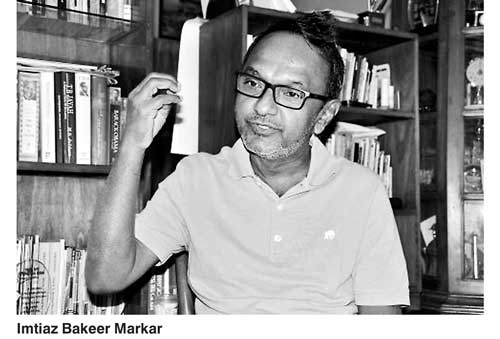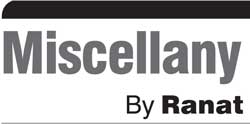Friday Jan 02, 2026
Friday Jan 02, 2026
Saturday, 7 January 2017 00:00 - - {{hitsCtrl.values.hits}}
As an old Anandian I felt proud listening to one-time Minister of Information Imtiaz Bakeer Markar on a TV program. As an old Anandian himself, he praised the way he was treated by the staff and students although he was not a Buddhist.
“I was the only Muslim in the college hostel. The master-in-charge decided to make me the student leader in the hostel,” he said with a broad smile.
He recalled how he got selected as the captain of the college hockey team in preference to his contender Vasantha Karannagoda, who was Navy chief a few years back. He also led the table tennis team. His skills both as a debater and as a Sinhala speaker made him the leader of the Sinhala debating team.
He was quoting these examples to illustrate how Ananda treated everyone alike without ethnic or religious bias. Possibly he was talking about the 1960s. But this was a tradition that Ananda followed right from the start way back in 1886.
As a student in the mid-1940s onwards, I have fond memories of Ananda as a school where there was absolutely no favoured treatment for Sinhalese or Buddhist students. I had Tamil friends. We continued our friendship even after leaving college. I was with some of them in the university together. There were others whom I used to meet when I came from Peradeniya during the holidays.
True, Ananda was started as a Buddhist English school. That was the era when Buddhists got step motherly treatment from the colonial administrators. They promoted missionaries to come and open schools most of which were attached to churches. The objective was two-fold – one, to convert Buddhists to their faiths and the other, to crush the ‘pirivena’ education and promote English which was their language. 
When people realised that learning English was the gateway for employment, naturally they got attracted towards a non-Buddhist education. In fact, it became the ‘fashion’ to get converted and learn English. Then they were guaranteed of a job.
Once the groundwork was laid by the American Theosophist, Colonel Henry Steels Olcott, the Buddhists gathered under the leadership of the scholar monk Venerable Hikkaduwe Sri Sumangala and decided to establish a regular five-day Buddhist English school. The location was Malibaan Street, Pettah – now a busy commercial centre. (It was a fashionable walkway in the Dutch period and was known as the ‘Mall’).
Ananda’s gates were open to everyone irrespective of which community they belonged to or what religion they followed.
Ananda has always been synonymous with Sinhala culture as well. At a time when other ‘Big Schools’ paid scant attention to the Sinhala language, literature and the arts, Ananda was the proud promoter of indigenous art and culture for over 125 years.
The P. de S. Kularatne era (1918-43) saw a great interest in fostering the national arts in the form of drama, music, dance and literature and moulding the students to appreciate and respect them.
Many of us may not have realised the value of what we were gaining within us when we were students. But as we became mature young men the ‘Ananda blood’ within us meant so much to face the numerous challenges in life.
Taking Imtiaz Bakeer Markar as an example, he has turned out to be a modest, balanced, seasoned politician making responsible statements against hate speech and promoting reconciliation and understanding. Undoubtedly the base was Ananda. Today he serves as Chairman of the newly-created National Media Centre.